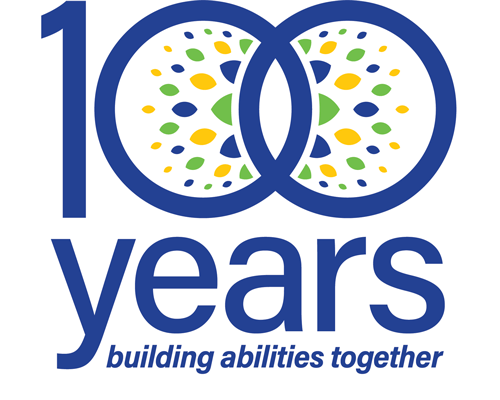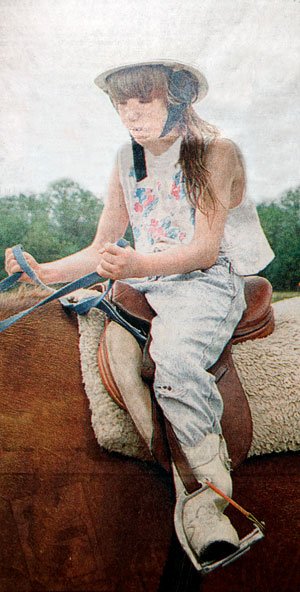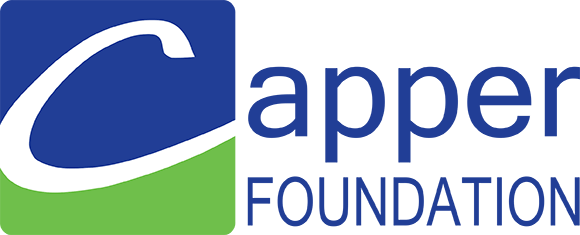Kristen Price (1993)
Disclaimer: The following was transcribed from an article in the Capper Foundation Archives published by The Topeka Capital-Journal. The choice of words used at the time this was written may not reflect current Capper Foundation inclusive language and views.
Kristen Price (1993)
by Sandra Moran
Dover-Nine-year-old Kristen Price bounced excitedly in the English saddle, the leather reins clutched in her hands as she leaned forward, craning her neck so she wouldn’t miss any of the activity around her.
Girls walked on both sides of the horse, their hands securing Kristen firmly in the saddle as a woman slowly led the horse around the oval arena.
 Appearing tiny astride the docile horse, a wide smile was the prominent feature on Kristen’s face as she rocked and swayed with the rhythm of the animal.
Appearing tiny astride the docile horse, a wide smile was the prominent feature on Kristen’s face as she rocked and swayed with the rhythm of the animal.
A student at the Capper Foundation, Kristen was one of two physically disabled girls chosen to participate in a weeklong therapeutic horseback riding program at Camp Daisy Hindman Girl Scout camp south of Dover.
Thirteen Girl Scouts from Topeka, Manhattan and Junction City volunteered to help with the program proposed to the scout council by Janice Newell.
Newell, a lifetime horsewoman who is working to establish a therapeutic horseback riding facility at Serenata Farms in Big Springs, explained the concept of therapeutic horseback riding.
Introduced in Germany about 50 years ago, the concept utilizes the movement and warmth of the horse’s body to help relax the muscles of the rider. Improvement of muscle tone, strength, and flexibility during therapeutic horseback riding often is more rapid than in other forms of therapy, because the rider interacts with and responds to the horse, Newell said.
The therapy is being used more widely for patients with physical disabilities making Kristen, who is visually and hearing impaired, a perfect candidate-as is her best friend, 13-year-old Erica Davis. Erica has spina bifida.
Both girls grinned as they sat astride their mounts.
After having spent the past two days learning about the horses and their tack and care, both were anxious to spend as much time as possible riding.
“I want to go fast,” Kristen announced as her horse, Galahad, was led on a zigzag pattern through a series of fluorescent orange cones in the middle of the arena.
She turned toward Newell’s direction. “Do you want me to go backwards?” she asked.
Newell laughed before telling her no. Kristen barely heard the answer as she strained her neck to monitor Erica’s progress as she was maneuvered through the cone course.
“You’re doing OK,” Erica assured her golden bay, Toby. “Just keep going.” The girls on either side of Erica smiled at her interaction with the horse.
Newell explained it was necessary to have the “side-walkers” present to make sure the rider isn’t hurt during the exercises. Kristen wishes that weren’t the case.
“I wish I could walk alone,” Kristen said, her face serious but devoid of self-pity. “But I can’t. They think I’d fall or something.”
Following the ride, Kristen stood outside the arena next to Erica, who sat in a wheelchair. The pair held hands as they agreed they were best friends.
They talked quietly to each other. “I’d like to stay here,” said Kristen, her tone wistful. Erica agreed.
The goal of the program was two-fold in that it gave Kristen and Erica a chance to spend time with the horses and allowed the volunteers an opportunity see what careers are available, said Maria Torrez Anderson, Girl Scout coordinator for the program. “It was an opportunity to expand our innovative programs,” she explained. “We’re trying to meet the needs of girls. This is a new career that’s opening up. It has allowed us an opportunity to expose them to that career.”
So, was the exposure enough to make any of the volunteers want to be a horseback riding therapist? The answers were mixed. Shermain Sanders considered the question as she sat on the rail of the corral with her friends and watched as Kristen and Erica again were escorted around the arena. Because there were 13 volunteers, they took turns assisting the riders. While waiting, many rode the remaining horses.
“I think this has been an influencing thing,” Shermain said as she watched Newell work with Kristen and Erica.
She admitted at first she was nervous at the thought of working with girls with physical disabilities.
“I was scared I would do something wrong,” she said as her friends nodded in agreement. “But they’re not any more different than us. Even though they’re limited in a couple of things, they still can work with the horses.”

